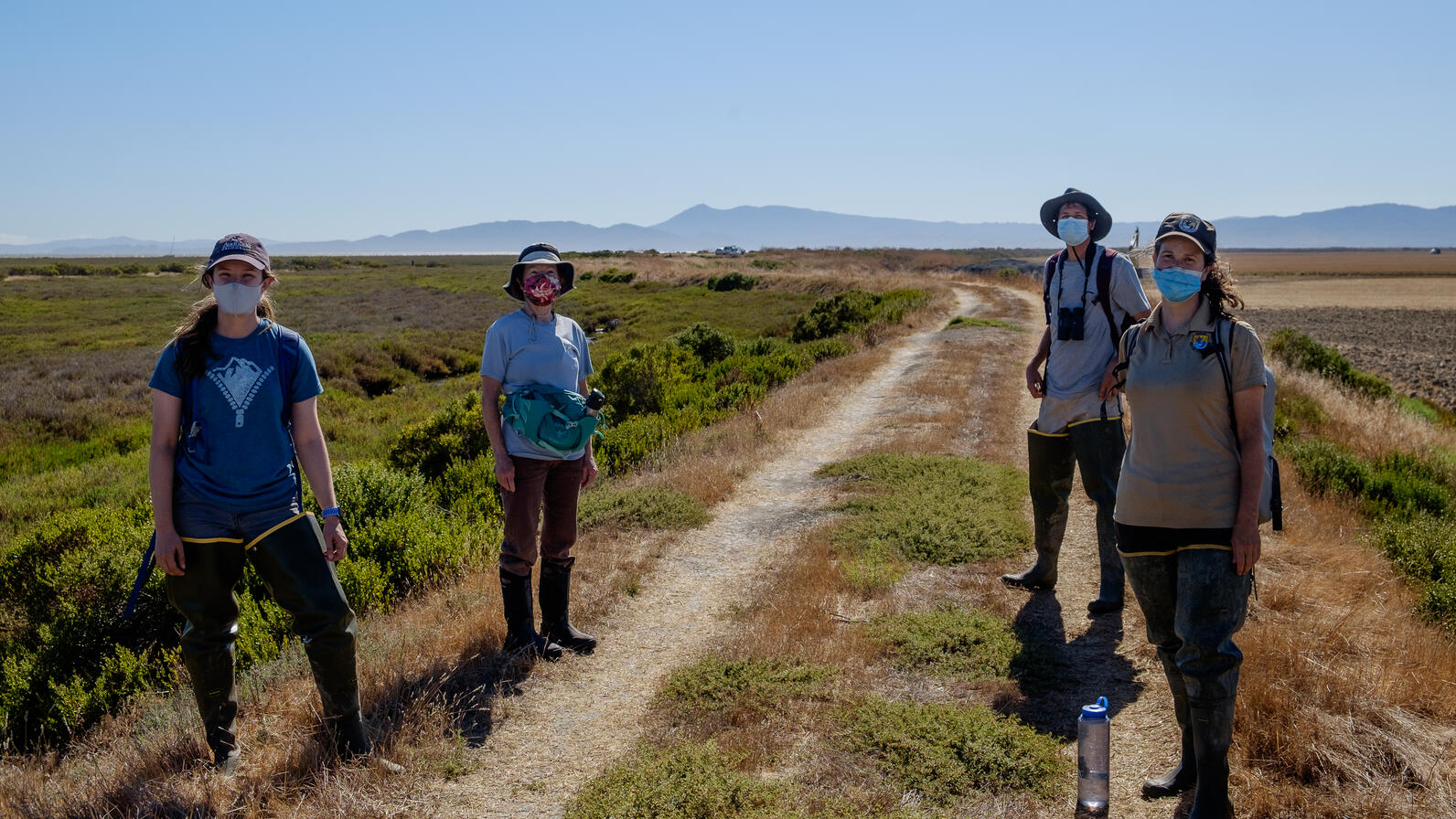Ridgway's Rail
Latin: Rallus obsoletus
Reviving 400-acres of wetland habitat in San Pablo Bay.
Sonoma Creek Marsh Photo: Haymar Lim/Audubon CA
Audubon California, U.S. Fish and Wildlife Service, and Marin Sonoma Mosquito Control District are partnering to enhance 400 acres of tidal marsh habitat on the San Pablo Bay National Wildlife Refuge along Sonoma Creek in northern San Francisco Bay. The project is part of Audubon’s Coastal Resilience work and this project in particular is the first of its kind to demonstrate how to ensure the marsh and its wildlife will be better adapted to withstand climate change in the future, particularly from sea level rise and storm surges.
The project will benefit birds such as Ridgway’s Rails, Black Rails, migratory waterbirds, and a number of marsh songbirds, along with the endangered salt marsh harvest mouse and native plants. Fish, such as Coho salmon and steelhead, rely on healthy wetlands as habitat where juvenile fish can feed and grow.
Designated as an Important Bird area, San Pablo Bay and its surrounding wetlands provide critical habitat for the birds of the Pacific Flyway. Birders visiting the refuge can see Brown Pelicans, White-tailed Kites, Golden Eagles, Peregrine Falcons, Common Yellowthroats, and migratory shorebirds including Whimbrels and Willets.
The Sonoma Creek runs from Sonoma County into the San Pablo Bay on the northernmost end of the greater San Francisco Bay. More than a hundred years of mining and agricultural operations have greatly limited the ecological function of these wetlands. Open water sediment from hydraulic mining during the Gold Rush caused a rapid buildup of mud flats which were subsequently turned into farmland, and maintained by levees.
In the last three decades, tidal action has reclaimed some of the area, creating stagnant wetlands that built up too fast to form natural channels. These stagnant pools form algal mats and harbor mosquitos. The remaining agricultural land has now become too salty for most agriculture, and some has been sold or abandoned.
The core of the project involves constructing a network of tidal channels within the marsh to drastically improve tidal exchange and nutrient cycling and provide habitat to a myriad of marsh-dependent wildlife species. The channels will also provide spawning and feeding grounds for endangered and commercial fishes.
Improving hydrology will improve water quality by increasing circulation and drastically reducing the amount of pesticides applied to areas of ponded water that currently facilitate heavy mosquito production.
The project also has a vital climate change adaptation component. Using soil excavated from digging the channels, we created a gently-graded high marsh transition zone along the edge of the marsh and habitat “marsh mounds” within the marsh. These features will reduce storm surge flooding of adjacent private lands and provide crucial high tide refuges for rails, shorebirds, and small mammals.
This project also helped change Bay Conservation and Development Commission’s (BCDC) restoration policy and permitting process to make it easier for restoration projects to use dredge spoil for beneficial uses in the future.
Implementation of the project has also provide hands-on educational opportunities for students who would not otherwise experience natural history in the field setting.
Phase 1 of the Project was constructed in 2015 and involved excavating a large, 4,550-ft long tidal channel through the center of the marsh and using the extracted soils to construct marsh mounds along the channel alignment, as well as a wetland-upland habitat transition “ramp” (or horizontal levee) along the existing perimeter levee.
Phase 2 of the project was completed October 2020, and added the following enhancement elements:
1. Constructing an additional 1,150 linear ft of the central tidal channel and utilizing the extracted soils to construct a series of marsh mounds along the channel length.
2. Removing a series of rock sills within the central channel, burying the material within pits excavated on the adjacent marsh plain, and using the void spoils to build additional marsh mounds.
3. Enlarging/extending existing tidal marsh channels into persistent open water impoundments on the east side of the central tidal channel to improve tidal exchange and drainage within these areas.
For a more visual overview of this groundbreaking project’s history and progression, please visit our blog post- “Restoring Sonoma Creek for Climate Resilience.”
Consultants for this project are Wetlands and Water Resources, Inc. Gillenwater Consulting, LLC, and ESA Associates. Construction is being carried out by Hanford ARC.

Funding and other support for this project has been provided by:
Audubon California is committed to protecting the birds and habitat of the San Francisco Bay.
Audubon California partnered with the San Pablo Bay National Wildlife Refuge in 2010 to restore vital bird habitat in San Pablo Bay.
Our newsletter is fun way to get our latest stories and important conservation updates from across the state.
Help secure the future for birds at risk from climate change, habitat loss and other threats. Your support will power our science, education, advocacy and on-the-ground conservation efforts.
California is a global biodiversity hotspots, with one of the greatest concentrations of living species on Earth.